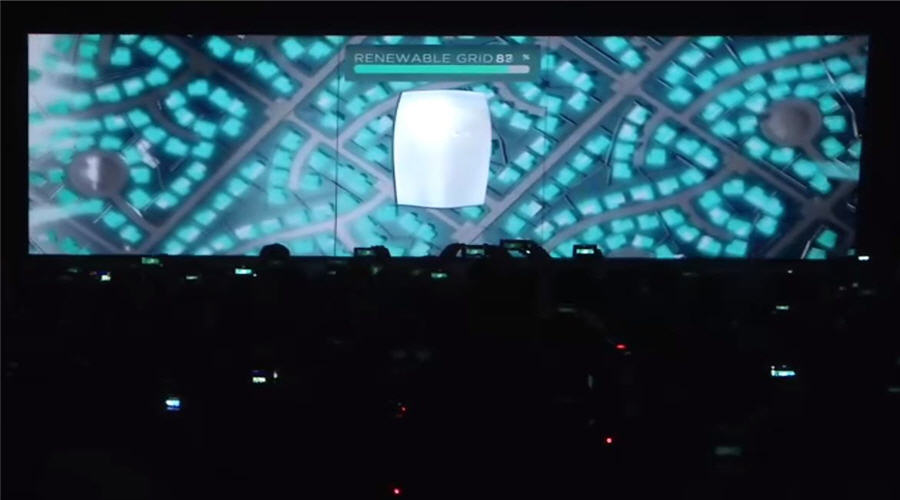Tesla Powerwall begins to ship, what does this mean?
Tesla Energy’s Powerwall has to started to ship on a global scale with customers in Australia receiving the first of the company’s lithium-ion battery packs designed to power homes.
The Gigafactory 1, the world’s biggest lithium-ion battery plant in Nevada and manufacturing home to the Powerwall, is also only weeks away from its official launch.
Here we revisit our five takeaway points on Tesla’s foray into the utility industry, as first published in #Benchmark2, our second published issue.
1. Tesla is a market creator
The showmanship exhibited by Elon Musk and the marketing approach by Tesla Motors has generated excitement that has never been seen in the EV or battery industries. Within one week of its utility battery launch the company received 38,000 Powerwall and 2,500 Powerpack reservations.
It is important to note that no deposit was required so this number can be considered more a statement of intent to buy rather than an order. Still, it was a gauge of just how excited the retail market was on the launch of what is a simple battery system.
2. Tesla is making change affordable and easy
Getting the retail market to buy en masse is some challenge.
Installing a battery system to power your home is not as simple as plug in and go. It will require a qualified electrician to connect your home to an inverter to make the power usable – converting from direct to alternate current. All of this equates to time, money and effort which deters individual buyers.
Tesla, however, is making the process easy, more affordable than what is presently on the market and, most of all, desirable.
Watch the launch of Tesla Energy…
3. Battery technology alone is not yet good enough
Today’s lithium-ion batteries are not yet good enough to satisfy the needs of new markets. In Elon Musk’s words they “suck” and are “really horrible”.
This however is being offset by innovation – increasingly intelligent software management systems and more aerodynamic and lightweight EV design, for example.
With increasing R&D spend going into improved battery cathode and anode technology, all focused on producing a more dense but lighter weight battery, trends in better battery chemistry and effective energy storage management are converging.
4. Gigafactory may just be the start
Benchmark has always stressed that batteries are not just about EVs. The wide range of battery uses today gives an indication of where the market can go.
Bigger and better batteries are needed to expand into markets such as retail and commercial energy storage. But the reaction to Tesla’s launch means the western public could be willing to accept a bigger role for batteries in their everyday lives.
Perhaps the most dramatic impact will be seen in Africa, India and South-East Asia where access to power is not as widespread as in developed economies, but conditions for solar energy are good to optimal. Using a battery to store this renewable energy could dramatically change the way developing nations use power.
This will result in a step change for demand of lithium-ion batteries and with it the need for significant increases in output.
The Gigafactory is looking to double the world’s output of lithium-ion cells when it reaches capacity in 2020, while a wide range of battery majors are also planning significant expansion or new plants, nearly all of which are in China.
When Elon Musk referred to the Gigafactory as “Gigafactory one” many would have, at a minimum, been surprised at his ambition. But today’s battery industry has been built to produce cells for smartphones and laptops, not the significantly bigger EVs and commercial storage units. If these markets take off in any serious way, the battery industry will be an entirely different place.
5. Tesla cannot do this alone
It is best to look at Tesla as a catalyst for change rather than the sole defining factor.
There is only so much one company can achieve in changing the way the world uses energy.
The reaction from other companies such as Nissan and Panasonic to launch their own competing products would have been welcomed by Tesla. With some of the world’s biggest corporations now behind energy storage in both EVs and utility sectors, significant change could be on the horizon.
More products and more competition usually results in lower costs for the consumer. This will have a positive impact on future battery demand.
Subscribe to Benchmark Membership today: email David Colbourn at dcolbourn@benchmarkminerals.com
More News
Lower silver demand and higher supply to reduce global deficit by 21% in 2025
Silver faces fifth year of structural market deficit.
April 16, 2025 | 06:35 am
{{ commodity.name }}
{{ post.title }}
{{ post.date }}





Comments